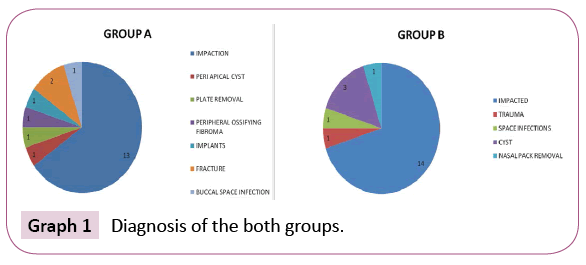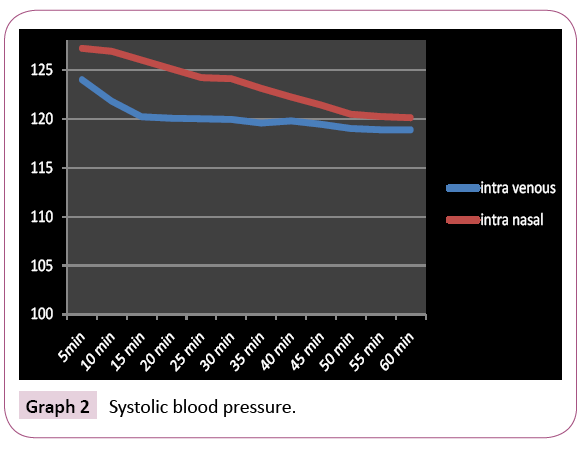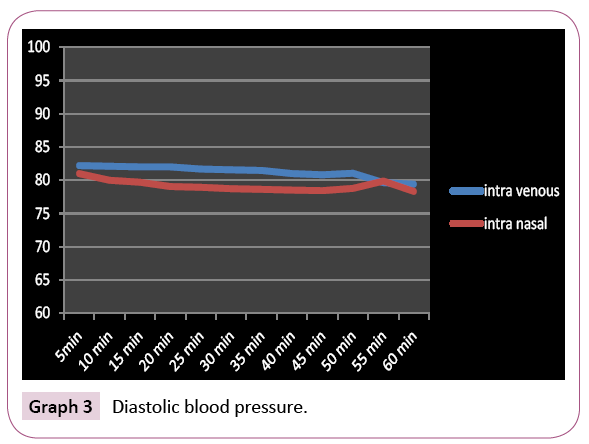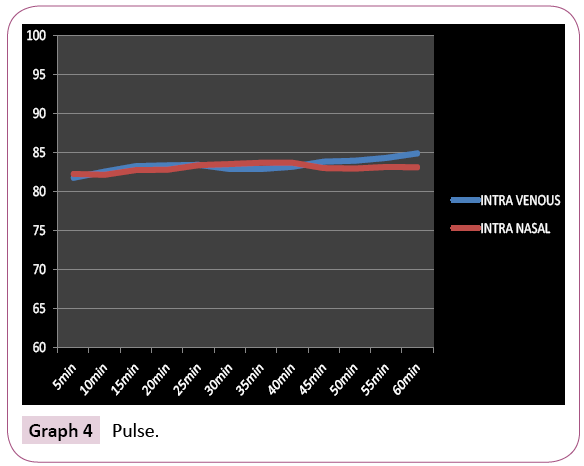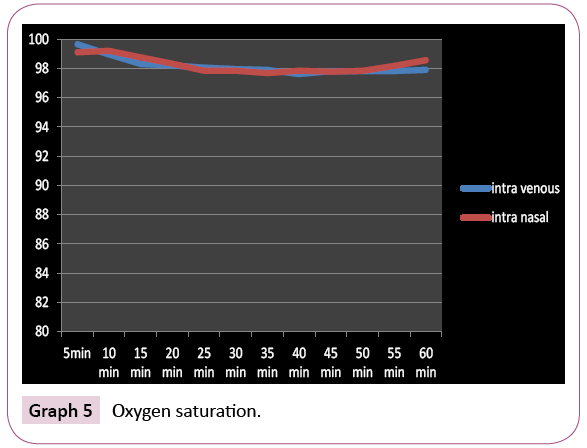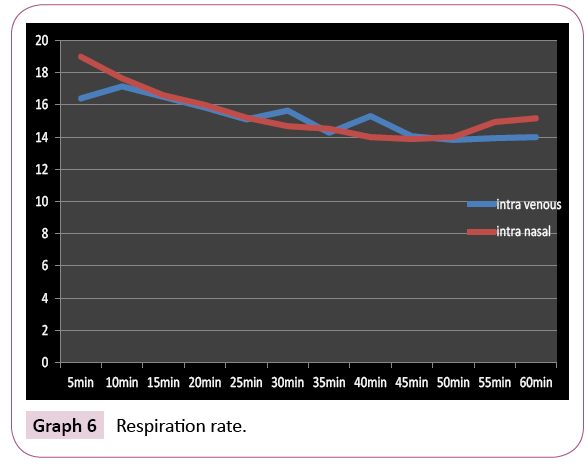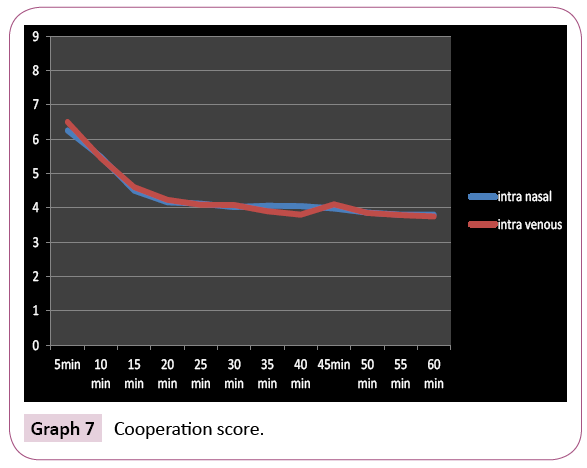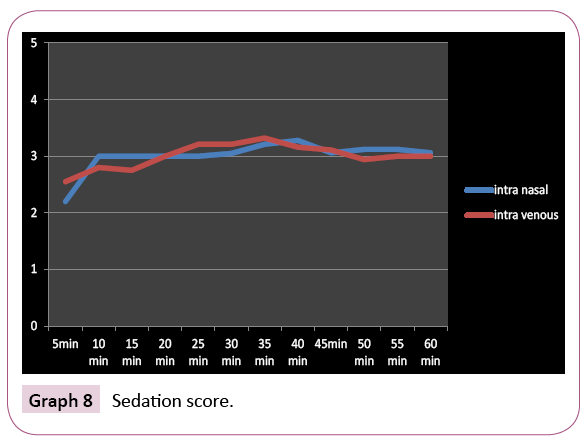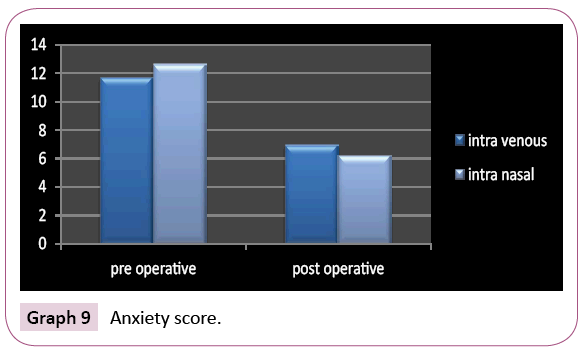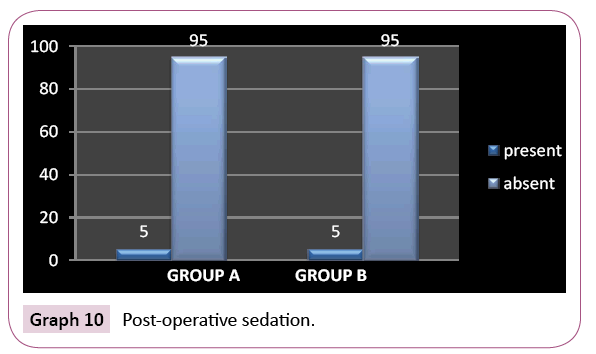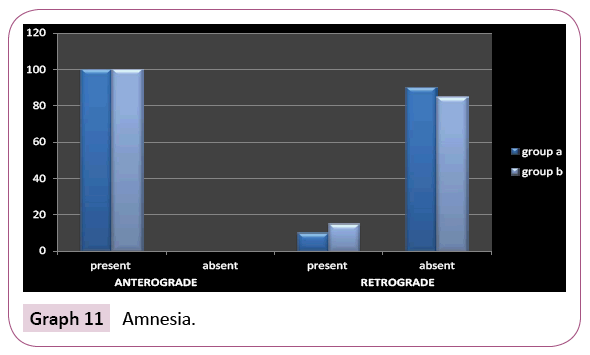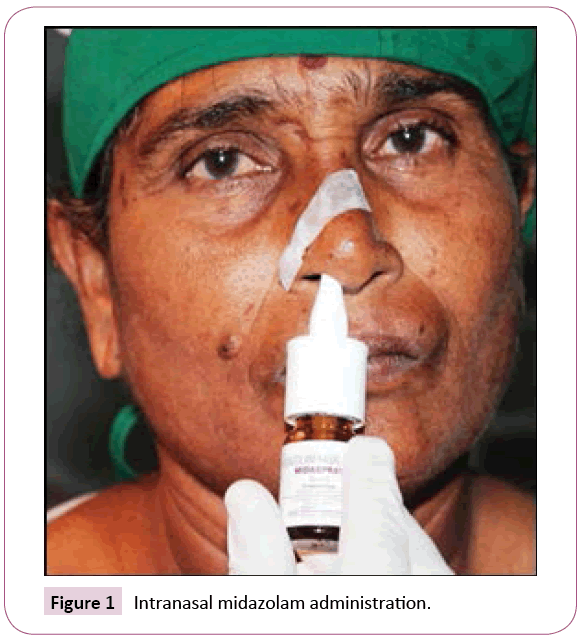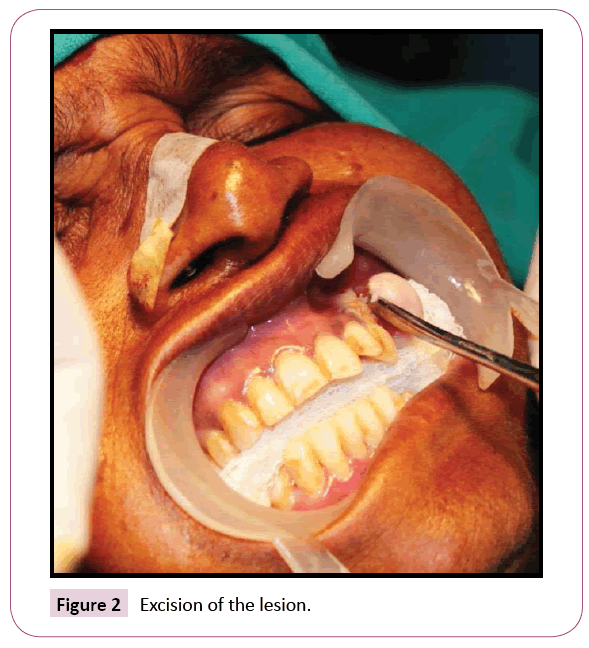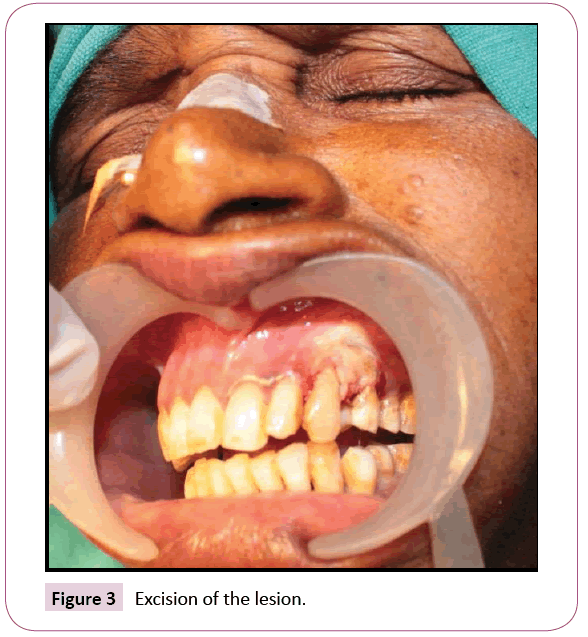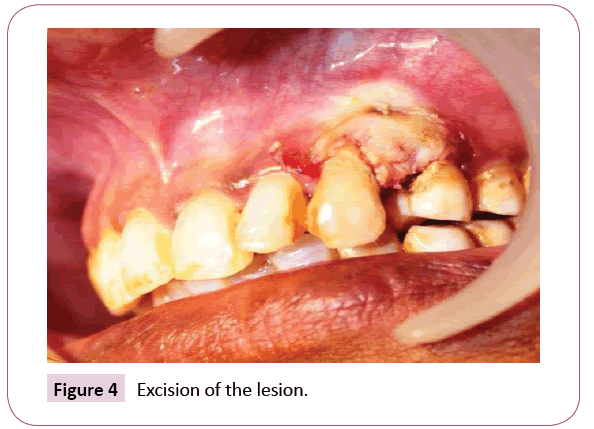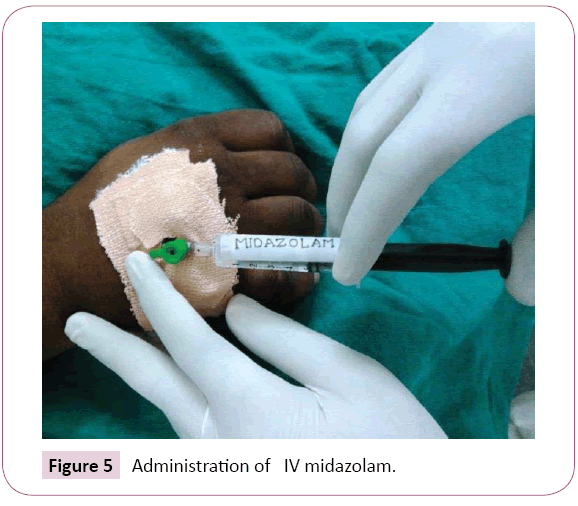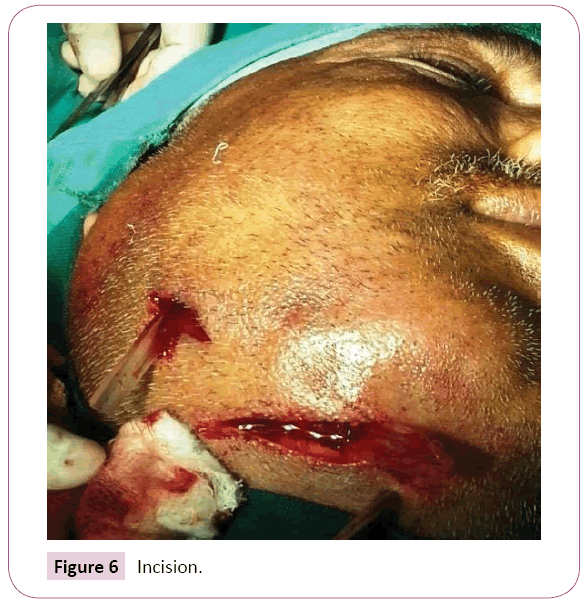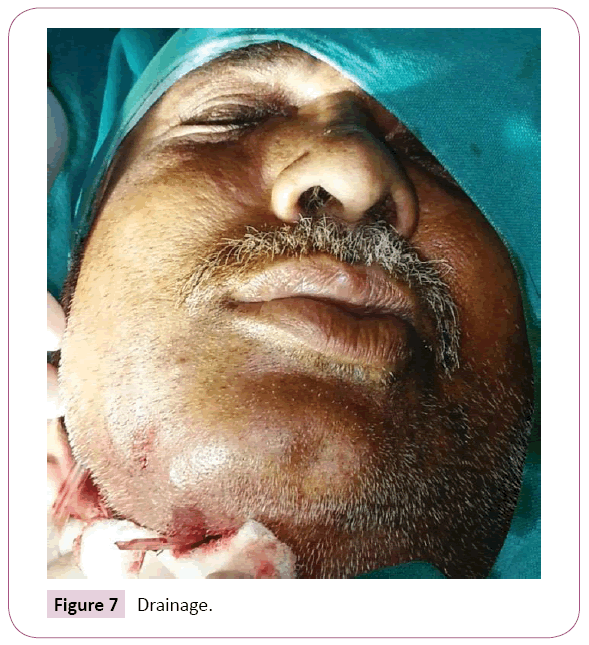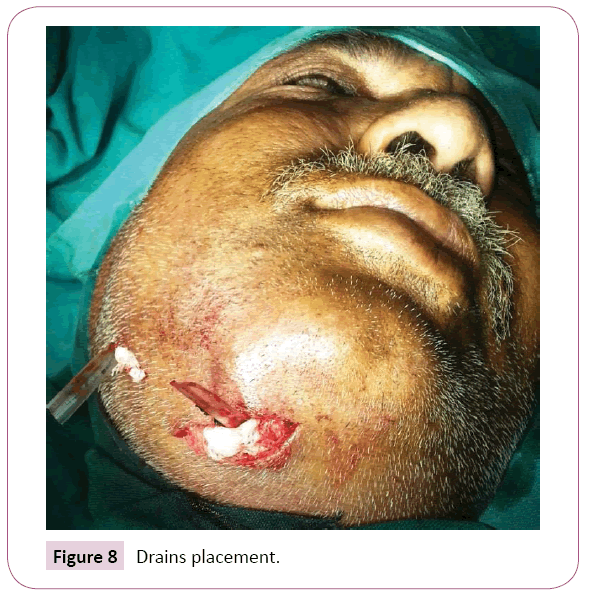ISSN : 2576-392X
Dentistry and Craniofacial Research
Conscious Sedation in Minor Oral Surgery with Midazolam IV Versus Nasal Spray a Comparative Study
Kiran PM1, Haripriya C2, Khadar Vali Shaik3*, Venkatesh V4, Pavan Kumar B4 and Ramesh K3
1Department of Oral and Maxillofacial Surgery, Dental Clinic and Maxillofacial Surgery Centre, Hyderabad, India
2Department of Surgical Oncology, M.S. Ramaiah Medical College, Bengaluru, India
3Department of Oral and Maxillofacial Surgery, MNR Dental College and Hospital, Sangareddy, Telangana, India
4Department of Oral and Maxillofacial Surgery, Kamineni Institute of Dental Sciences, Narketpally, Telangana, India
- *Corresponding Author:
- Khadar Vali Shaik
Department of Oral and Maxillofacial Surgery, MNR Dental College and Hospital, Sangareddy, Telangana, India.
Tel: +91-9966978786
E-mail: khadar.shaik04@gmail.com
Received Date: November 08, 2017; Accepted Date: November 18, 2017; Published Date: November 25, 2017
Citation: Kiran PM, Haripriya C, Shaik KV, Venkatesh V, Kumar BP, et al. (2017) Conscious Sedation in Minor Oral Surgery with Midazolam IV Versus Nasal Spray a Comparative Study. J Dent Craniofac Res. Vol.2 No.2:15. doi: 10.21767/2576-392X.100015
Abstract
Aim: The purpose of this study was to assess the effectiveness of nasal spray midazolam by comparing it with conventional intravenous midazolam conscious sedation in minor oral surgical procedures.
Objective: To assess the safety and effectiveness of the midazolam nasal spray in comparison to its IV midazolam.
Patients and methods: Total forty number of patients were selected, and they were divided in to two groups. Group A for intra nasal midazolam atomized spray (n=20) and Group B for intravenous midazolam (n=20). Physiological parameters, anxiety score, sedation rating, patient’s cooperation score, retrograde and anterograde amnesia were recorded for each patient during preoperative, intra operative and postoperative period. Final evaluation of safety and efficacy in the nasal and intravenous routes of midazolam drug during minor oral surgery were compared.
Results: In the present study both intranasal and intravenous groups showed decrease in SBP and DBP intra operatively but in physiological limits and increase in the average pulse rates in the both groups. The average oxygen saturation levels were maintained to normal range in both the groups. The average respiratory rate decreased in the both intranasal and intravenous groups during surgical procedure. The preoperative to postoperative anxiety scores were decreased significantly in the both groups and there was no significant difference in pre to postoperative anxiety scores in between the groups.
Conclusion: Both intravenous and intranasal routes of administration of midazolam showed patient cooperation, satisfaction and clinical effectiveness. Intranasal route of midazolam spray is effective in reduction of subjective stress feelings, reliable anxiolysis while preserving protective reflexes.
Keywords
Midazolam; Conscious sedation; Minor oral surgery; Anxiolysis
Introduction
Apprehension of the patient towards the minor oral surgical procedures is mainly due to unpleasant experiences to the patient incurred due to lack of knowledge, previous incidents or previous fearful experiences narrated to them by others. Such situations create anxiety in the patient who requires minor oral surgical treatments and leads to psychological and physiological disturbances. Hence the technique of anesthesia in the form of “conscious sedation” was developed [1]. The use of benzodiazepines like diazepam and midazolam has drawn a major development to avoid general anesthesia and can comfortably treat under intravenous sedation. In minor oral surgical procedures which can avoid general anesthesia because of their lesser time, simple procedure, or patient factors like age, associated medical conditions, conscious sedation can be considered as a better option. With patients who are likely to be less compliant because of their fear of local anesthetic injections and anxiety towards surgical procedures under local anesthesia, conscious sedation can be useful. Midazolam is one of the available drugs for conscious sedation, commonly administered intravenously and also available as a nasal spray. Keeping all the above parameters in view, this study was done to compare conscious sedation with midazolam through intra nasal spray and conventional intra venous routes.
Materials and Methods
This study included patients reporting to out-patient department (OPD) of the oral and maxillofacial surgery, from the Kamineni Institute of Dental Sciences and Hospitals, Sreepuram, Narketpally, Nalgonda, for the purpose of minor oral surgery.
A total of forty patients were selected. The criteria governing the suitability were patients indicated for minor oral surgical procedures between 10-50 years of age and ready for periodic review, having greater stress, fear and anxiety, who were uncooperative to surgery and patients under ASA grade I and II were included. Patients were excluded from the study with a history of serious psychiatric illness, on chronic use of central nervous system depressants or antidepressants, or alcohol abuse, morbidly obese patient’s (BMI more than 30), who reported a history of anesthetic-related complications and pregnant patients were excluded. The selected Patients were randomly divided into two groups, Group A, twenty patients in whom midazolam nasal spray (0.1 mg/kg) (insed atomizer) was used (test group). Each metered dose of 100 μl of insed atomizer delivers 0.5 mg midazolam and Group B, twenty patients in whom conventional IV midazolam (0.1 mg/kg) was used. (control group). Physiological parameters, anxiety score, sedation rating, patient’s cooperation score, retrograde and anterograde amnesia were recorded for each patient during preoperative, intra operative and postoperative period. Final evaluation of safety and efficacy in the nasal and intravenous routes of midazolam drug during minor oral surgery were compared.
Procedure
Pre-operatively, on the day of surgery all the physiologic parameters such as heart rate, blood pressure, oxygen saturation, respiratory rate and anxiety scale were recorded. Prior to start of surgery 0.1 mg/kg midazolam was administered either intra nasal spray or intravenously. Intra operatively all patients were monitored for every five minutes till the end of procedure (15 minutes to 60 minutes) for the following parameters, blood pressure, respiratory rate, pulse, oxygen saturation, sedation ratings by Ramsay sedation scale [2] (Table 1) and patient’s cooperation score [3] (Table 2) were recorded. Patient verbal response was determined by talking to the patient intermittently.
| Score | Responsiveness |
|---|---|
| 1 | Patient is anxious and agitated or restless, or both |
| 2 | Patient is cooperative, oriented and tranquil |
| 3 | Patient responds to commands only |
| 4 | Patient exhibits brisk response to light glabellar tap or loud auditory stimulus |
| 5 | Patient exhibits a sluggish response to light glabellar tap or loud auditory stimulus |
| 6 | Patient exhibits no response |
Table 1: Ramsay sedation scale.
| Response | Score |
|---|---|
| Did the patients movements during the local anesthesia or the procedure interfere or delay treatment? | |
| No interfering movements | 0 |
| Minor movements, positioning remained appropriate | 1 |
| Minor movements, patient had to be repositioned | 2 |
| Movements grossly interfered with the procedure | 3 |
| To what extent did the patient verbalize discomfort during the procedure? | |
| Not at all | 0 |
| Some verbalization, but did not indicate pain or discomfort | 1 |
| Some verbalization indicating pain or discomfort | 2 |
| Complained frequently during the procedure | 3 |
| Did the patient show nonverbal signs of discomfort during the procedure? | |
| Not at all | 0 |
| Slight discomfort, occasional grimaces | 1 |
| Moderate discomfort, feet/hands tensed, tears in eyes | 2 |
| Marked discomfort apparent during procedure | 3 |
| Sum of the numbers next to each response and record as the score of (O-9) | |
Table 2: Co-operation score during the procedure.
Post operatively, the following questions were asked after 30 minutes of recovery to determine the post-operative sedation effects in each patient.
a. Do you experience nausea/vomiting? Yes/No
b. Feeling sleepy? Yes/No
c. Had a headache: Yes/No
d. Feeling dizzy? Yes/No
e. Other aches/pain? Yes/No
f. Dreams Yes/No
g. Hiccups Yes/No
After one hour of the procedure, patients were asked whether they were able to recollect the procedure to assess the retrograde and anterograde amnesia. Post-operative anxiety was assessed in all the patients using anxiety scale. Patients were discharged with an escort when they were able to walk steadily.
Statistical analysis and correlations were performed using statistical package for social sciences (SPSS) statistics analyzing software.
Results
Group– A
The demographic data of the patients are presented in Table 3. The average age were 26.5 years, 13 male and 7 female patients were included under group A with a mean weight of 51.8 kg (Tables 4-9) (Graph 1-11) and (Figures 1-4).
Graph 9: Anxiety score.
| Group | Male | Female | Total number of the patients | age in mean (years) | weight in mean (kgs) |
|---|---|---|---|---|---|
| Group – a | 13 | 07 | 20 | 26.5 | 51.8 |
| Group – b | 06 | 14 | 20 | 31.2 | 54.5 |
Table 3: Demographic data.
| Indications | Group A | Group B |
|---|---|---|
| Impactions | 13 | 14 |
| Peri apical cysts | 1 | 3 |
| Fracture | 2 | 1 |
| Implants | 1 | 0 |
| Space infections | 1 | 1 |
| Nasal pack removal | 0 | 1 |
| Peripheral ossifying fibroma | 1 | 0 |
| Plate removal of postoperative trauma case | 1 | 0 |
| Total number of patients | 20 | 20 |
Table 4: Diagnosis.
| Time | SBP | DBP | PR | SPO2 | RR | |||||
|---|---|---|---|---|---|---|---|---|---|---|
| intra nasal | intra venous | intra nasal | intra venous | intra nasal | intra venous | intra nasal | intra venous | intra nasal | intra venous | |
| 5min | 127.2 | 124 | 82.2 | 81 | 81.8 | 82.3 | 99.1 | 99.65 | 16.4 | 19 |
| 10 min | 126.9 | 121.8 | 82.1 | 80 | 82.6 | 82.2 | 99.2 | 98.95 | 17.15 | 17.65 |
| 15 min | 126 | 120.2 | 82 | 79.7 | 83.3 | 82.8 | 98.75 | 98.3 | 16.5 | 16.6 |
| 20 min | 125.1 | 120.05 | 82 | 79.05 | 83.4 | 82.84 | 98.32 | 98.2 | 15.84 | 16 |
| 25 min | 124.21 | 120 | 81.68 | 78.94 | 83.47 | 83.42 | 97.84 | 98.05 | 15.1 | 15.21 |
| 30 min | 124.10 | 119.94 | 81.57 | 78.73 | 82.94 | 83.57 | 97.84 | 97.95 | 15.65 | 14.68 |
| 35 min | 123.11 | 119.57 | 81.47 | 78.63 | 82.94 | 83.73 | 97.68 | 97.89 | 14.27 | 14.52 |
| 40 min | 122.23 | 119.78 | 81 | 78.52 | 83.22 | 83.73 | 97.84 | 97.61 | 15.31 | 14 |
| 45 min | 121.41 | 119.44 | 80.82 | 78.44 | 83.88 | 83.05 | 97.78 | 97.82 | 14.05 | 13.88 |
| 50 min | 120.47 | 119 | 81.05 | 78.77 | 84 | 83 | 97.83 | 97.82 | 13.83 | 14 |
| 55 min | 120.23 | 118.88 | 79.64 | 79.88 | 84.35 | 83.2 | 98.17 | 97.82 | 13.94 | 14.94 |
| 60 min | 120.11 | 118.88 | 79.41 | 78.33 | 84.94 | 83.16 | 98.56 | 97.9 | 14 | 15.17 |
Table 5: Parameters-systolic blood pressure, diastolic blood pressure, pulse rate, oxygen saturation, respiratory rate.
| Time | Co-Operation score | Sedation score | ||
|---|---|---|---|---|
| intra nasal | intra venous | intra nasal | intra venous | |
| 5min | 6.25 | 6.5 | 2.2 | 2.55 |
| 10 min | 5.49 | 5.45 | 3 | 2.8 |
| 15 min | 4.5 | 4.6 | 3 | 2.75 |
| 20 min | 4.16 | 4.23 | 3 | 3 |
| 25 min | 4.12 | 4.09 | 3 | 3.21 |
| 30 min | 4.02 | 4.08 | 3.05 | 3.21 |
| 35 min | 4.06 | 3.9 | 3.21 | 3.32 |
| 40 min | 4.05 | 3.8 | 3.28 | 3.16 |
| 45min | 3.98 | 4.1 | 3.06 | 3.11 |
| 50 min | 3.86 | 3.85 | 3.12 | 2.94 |
| 55 min | 3.8 | 3.79 | 3.12 | 3 |
| 60 min | 3.8 | 3.75 | 3.06 | 3 |
Table 6: Scores-cooperation score, sedation score.
| Test or Control | Mean | N | Std. deviation | ||
|---|---|---|---|---|---|
| Intra venous | Pair 1 | pre-operative anxiety score | 11.70 | 20 | 2.055 |
| post-operative anxiety score | 6.95 | 20 | 1.605 | ||
| Nasal | Pair 1 | pre-operative anxiety score | 12.65 | 20 | 2.777 |
| post-operative anxiety score | 6.20 | 20 | 1.508 | ||
Table 7: Anxiety score.
| Group | Post-operative sedation | |
|---|---|---|
| Absent | Present | |
| Group A | 95% | 5% |
| Group B | 95% | 5% |
Table 8: Post-operative sedation.
| Group | Anterograde | Retrograde | ||
|---|---|---|---|---|
| Present | Absent | Present | Absent | |
| Group A | 100% | 0 | 10% | 90% |
| Group B | 100% | 0 | 15% | 85% |
Table 9: Amnesia.
Group– B
The demographic data of the patients are presented in Table 3. The average age were 31.2 years, 6 male and 14 female patients were included under group B with a mean weight of 54.5 kg (Figures 5-8).
Figure 5: Administration of IV midazolam.
Discussion
Conscious sedation is a medically controlled state of depressed consciousness that allows protective reflexes to be maintained, it retains the patient’s ability to keep an airway patent independently and continuously, and permits appropriate responses to physical stimulation or verbal commands [4]. It is useful in those patients whose anxiety levels are more and who are unlikely to cooperate during minor oral surgical procedures, and can be induced by various routes of administration such as inhalation, intranasal spray, intravenous, oral and intramuscular routes. In this study patients were chosen for intranasal and intravenous routes of midazolam administration.
In this present study, intranasal route of midazolam administration preoperatively SBP and DBP are 129.6 and 82.7 mm of Hg respectively. There was a decrease in both SBP and DBP by 7 mm of Hg and 3 mm of Hg respectively during intra operative period from fifth to sixtieth minute. In intravenous route of midazolam administration preoperatively SBP and DBP are 12.75 and 80.7 mm of Hg and there was a decrease in both SBP and DBP of about 5 mm of Hg and 2 mm of Hg respectively during intra operative period from fifth to sixtieth minute.
Kaufman et al. [5] in their study compared intranasal and intravenous midazolam sedation in a Dental Phobia Clinic and stated that there was no change in blood pressure in both groups of patients who were sedated with midazolam. In a study, Mazaheri et al. [6] used intra nasal midazolam to induce conscious sedation in children with negative and aggressive behavior and stated that during the entire length of study all the patients had stable and normal physiological parameters. The study of Gilchrist et al. [7] assessed the use of intranasal midazolam (0.25 mg/kg) in paediatric dental patients requiring extractions or simple surgical procedures who may otherwise have required a general anaesthetic and concluded that those physiological parameters remained stable. Similarly, Chandra Rodrigo et al. [8] compared the 1 and 3-minute lockout periods during patient-controlled sedation with midazolam and stated that following the onset of sedation there was a slight fall of blood pressure. In their study Dixon et al. [9] used sedation for local anaesthesia and compared intravenous midazolam and diazepam and stated that in the midazolam there was a significant fall in systolic and diastolic blood pressure after satisfactory sedation was obtained. In their study Forster et al. [10] used intra venous midazolam as an induction agent for anaesthesia and stated that in normal persons, midazolam, 0.15 mg/kg IV over 15 sec, produces statistically significant reduction in systolic (5%) and diastolic (10%) blood pressure. Similarly, Bijl et al. [11] compared intravenously administered midazolam (0.1 mg/kg) with placebo in a randomized study in 50 patients undergoing oral surgical procedures under local anaesthesia and stated that systolic and diastolic blood pressures fall by approximately 11 and 5 mm of Hg, respectively, in the midazolam group. In their study Rodrigo et al. [12] compared patient-controlled sedation with 1-mg increments of midazolam at 1-min intervals with 0.1- mg increments of midazolam without a lock-out interval in thirtytwo patients with age of 17-35 years having third molar surgery and stated that there was slight decrease in blood pressure in both groups.
Therefore, this present study shows that the SBP and DBP decreased when midazolam was administrated either intravenous or as an intranasal spray in all patients with in the physiological limits.
In this present study, in the intranasal group the average pulse rate preoperatively was 83 beats/min, and there was an increase in the average pulse from fifth minute (81.8 bpm) to sixtieth minute (84.94 bpm) intra operatively. In intra venous group the average pulse rate preoperatively was 83.5 beats/min, and there was an increase in the average pulse rate from fifth minute (82.3 bpm) to sixtieth minute (83.16 bpm) intra operatively.
In their Mazaheri et al. [6] used intra nasal midazolam to induce conscious sedation in children with negative and aggressive behavior and stated that during the entire length of study all the patients had stable and normal pulse rate. Similarly, Shashikiran et al. [13] undertook a study to evaluate Midazolam as a paediatric conscious sedative agent for a routine Indian dental setup and to compare its efficacy and safety when administered by intranasal and intramuscular routes, at a dosage of 0.2 mg/ kg body weight and stated that there was slightly increase in pulse rate in the intranasal group but that was not significant. Gilchrist et al. [7] assessed the use of intranasal midazolam (0.25 mg/kg) in pediatric dental patients requiring extractions or simple surgical procedures who may otherwise have required a general anaesthetic and concluded that those physiological parameters remained stable. Metal et al. [14], compared midazolam and diazepam in gastroscopy and stated that with a dose of 0.07 mg/kg of midazolam there was an increase in pulse rate immediately after injecting the midazolam. Forster et al. [10] used intra venous midazolam as an induction agent for anaesthesia and stated that, midazolam, 0.15 mg/kg IV over 15 secs, produces statistically significant increase in pulse rate (18%). Similarly, Rodrigo et al. [12] compared patient-controlled sedation with 1-mg increments of midazolam at 1-min intervals with 0.1-mg increments of midazolam without a lock-out interval in thirty-two patients with age of 17-35 years, having third molar surgery and stated that there was increase in pulse rate in both groups after injection of local anaesthesia. On contrary in their study Dixon et al. [9] used sedation for local anaesthesia and compared intravenous midazolam and diazepam and stated that there was no significant change in pulse rate following production of satisfactory sedation. Similarly, Bijl et al. [11] compared intravenously administered midazolam (0.1 mg/kg) with placebo in a randomized study in 50 patients undergoing oral surgical procedures under local anaesthesia and stated that there is no increase in pulse rate in both the groups. In this study, in both groups, all patients showed an increasing in pulse rate irrespective of the route of administration of midazolam drug.
The present study showed that in intranasal group there was an average pre-operative SPO2 of 98.4%. The SPO2 percentage at fifth minute was 99.1% and by sixtieth minute it was 98.56% intra operatively. In intravenous group there was an average preoperative SPO2 of 99.1%. The average SPO2 percentage at fifth minute was 99.65% and by sixtieth minute it was 97.9% intra operatively. If midazolam is given rapidly, it may produce apnea. In doses used for induction (0.2 mg/kg) of anaesthesia it causes respiratory depression, but in this study the dosage used was 0.1 mg/kg which is less than the dosage in induction anaesthesia and none of the patients showed desaturation [15].
Similarly, Kaufman et al. [5] stated that there is no change in SPO2 in all groups of patients who were sedated with midazolam. In their study Lloyd et al. [16] stated that there was no instance of oxygen desaturation below 94%. Similarly, Mazaheri et al. [6] stated that oxygen saturation levels remained in normal limits of 97% to 98%. Gilchrist et al. [7] assessed the use of intranasal midazolam (0.25 mg/kg) in pediatric dental patients requiring extractions or simple surgical procedures and concluded that those physiological parameters remained stable with no clinical significant episodes of desaturation. In a study Rodrigo et al. [12] stated that the mean oxygen saturation during both procedures was 98% and the range was 97% to 100%. Bijl et al. [11] stated that 10 mins after administration of midazolam there was a decrease in SPO2 than that of placebo group which disappeared after administration of local anaesthetic agent. Rodrigo et al. [17] evaluated oxygen desaturation during third molar surgery under conscious sedation with midazolam and stated that there was no significant desaturation attributable to midazolam sedation. During the entire time up to the postoperative period the oxygen saturation values were maintained and this observation is not different in both groups similar to the previous studies reported.
In the present study in intranasal group there was an average preoperative RR of 18.55 cycles/min. The average RR at fifth minute was 19 cycles/min and at sixtieth minute was 15.17 cycles/min intra operatively. Post operatively average RR was 17.6 cycles/min. In intravenous group the average RR preoperatively was 17.2 cycles/min. The average RR at fifth minute was 16.4 cycles/min and at sixtieth minute was 14 cycles/ min intra operatively. Post operatively the average RR reported was 15.5 cycles/min. Midazolam produces some respiratory depression in healthy humans. Midazolam with a dose of 0.15 mg/kg significantly reduces the ventilator response to CO2 and significantly reduces the mouth occlusion-pressure response to CO2, but in this study the dosage used was 0.1 mg/kg, and there was no significant decrease in the respiration rate [18].
In their study Lloyd et al. [16] reported that there were no instances of respiratory depression. Mazaheri et al. [6] stated that during the entire length of study all the patients had stable and normal respiratory rate. In their study Shashikiran et al. [13] stated that there was slight decrease in the respiratory rate in intranasal group but that was not significant clinically. Different studies showed varying results corresponding to respiratory rate after administration of midazolam intravenously. In their study Whitwam et al. [14] stated that with a dose of 0.07 mg/kg of midazolam there were no gross differences in respiratory effects. In their study Dixon et al. [9] stated that there was significant rise in respiratory rate following satisfactory sedation. Bijl et al. [11] stated that there was significant respiratory depression in their study during surgical procedure when compared to placebo group. The present study showed slight decrease in respiratory rate in both groups intra operatively which was also observed in previous studies. This decrease in respiratory rate intra operative was within the normal physiological range.
The present study showed that in intranasal group the average pre-operative anxiety score was 12.65 and post-operative anxiety score was 6.20. In the intravenous group the average pre-operative score was 11.70 and post-operative score was 6.95. Bijl et al. [11] stated that anxiety levels of the midazolam group of patients were significantly less than the corresponding anxiety levels of the placebo group Kaufman et al. [5] stated that all modes of sedation were found to be effective in reducing anxiety. In their study Burstein et al. [19] evaluated midazolam following intranasal administration to adult dental surgery patients and to ascertain the effect of midazolam on anxiety. Anxiety was evaluated using a 100-mm visual analogue scale and they stated that there was a reduction in anxiety score. In their study Josef Hollenhors et al. [20] evaluated the effectiveness of intranasally administered midazolam spray in preventing claustrophobic responses of patients undergoing MR imaging and conclude that a sizeable reduction in MR imaging–related anxiety and improved MR image quality were seen with patients who received intranasal midazolam spray. In their study Mazaheri et al. [6] stated that the drug is effective in reduction of the anxiety. In their study Gilchrist et al. [7] assessed the use of intranasal midazolam (0.25 mg/kg) and it provided adequate anxiolysis for majority of the children. The present study shows that there was significant decrease in anxiety score from preoperative to postoperative period in both the groups significantly in correlation with the previous studies.
The present study showed complete anterograde amnesia in the both groups. Retrograde amnesia in intravenous group was seen in 15% and in intra nasal group was seen in 10% of the patients. Bijl et al. [8] stated that Amnesia as tested by questioning patients on peri-operative events immediately and 1 week after the procedure showed a decreased ability to recollect these events among the group of patients who had received midazolam. In their study Luyk et al. [21] compared the amnesic properties and psychomotor recovery between a bolus injection of midazolam and a bolus injection followed by continuous infusion of midazolam in patients for 3rd molar surgery and stated that the patients experienced significant amnesia to local anaesthetic injection in both groups. Kupietz et al. [22] compared anterograde amnesic effects of midazolam with hydroxyzine in children undergoing dental treatment with those drugs plus nitrous oxide, using a recall test and concluded that Midazolam was more effective in creating amnesia than hydroxyzine in his study.
The present study shows that the patient cooperation was increased by midazolam in both routes of drug administration with patients who gave minimal movements during procedure, positioning of the patient remained appropriate, some verbalization, but it did not indicate pain or discomfort and occasional grimaces. In their study Vander et al. [8] stated that patients receiving placebo group were significantly more arousable during surgical procedure than those receiving midazolam. Similarly, Walberg et al. [23] stated that most of the children were slightly drowsy when brought into the operatory and some of them were euphoric and smiling when midazolam was given intravenously. In their study Rodrigo et al. [12] stated that patients who received intra venous midazolam were relaxed during the procedure. In their study Lloyd et al. [16] used intranasal midazolam as an alternative to general anaesthesia in the management of children with oral and maxillofacial trauma and stated that children were cooperative during the procedure. In their study Mazaheri et al. [6] Assessed the Intranasal Midazolam Administration with a dose of 0.5 mg/Kg in behavior management of uncooperative children and stated that there is an increase in the patient’s behavior based on houpt scale. The present study shows that there is an increase in patient’s cooperation levels after administrating the midazolam either intravenously or intranasally, in all the patients.
The present study shows that the sedation score increased in both the groups after administration of midazolam from fifth minute to sixtieth minute. In both the groups onset of action ranged in between 5 to 10 min and in intranasal group the onset of action was faster when compared to intravenous group, and the patients responded to verbal commands throughout the procedure. In a study Vander et al. [8] compared intra venous midazolam with the placebo group and stated that it was possible to communicate verbally with the patient when using 0.1 mg/kg of midazolam. In their study Rose et al. [24] evaluated 90 children sedated with intranasal midazolam and they were moderately drowsy but usually did not fall completely asleep. The average time to peak plasma concentrations and maximal effect is 10 min. In their study Walberg et al. [23] stated that intranasal midazolam shows a rapid onset of 10-15 min and a short duration of effect (40-60 min). Bunz and Gossle [25] confirmed the bioavailability of midazolam via the nasal route in 38 children prior to ear, nose, and throat surgery. Their results revealed that by giving a dose of 0.2 mg/kg intranasally, the level of premeditation was sufficient in 79% of the patients 5 minutes after application. Within 10 minutes, 95% of the children showed sufficient premedication. In their study Rodrigo et al. [12] stated that patients who received intra venous midazolam were either mildly or moderately sedated. In their study Lloyd et al. [16] used Intranasal midazolam as an alternative to general anaesthesia in the management of children with oral and maxillofacial trauma and stated that children were cooperative or with good to excellent sedation with a dose of 0.2 mg/kg. Romina Mazaheri et al. [6] assessed the intranasal midazolam administration with a dose of 0.5 mg/kg in behavior management of uncooperative children and stated that it resulted in successful sedation.
In this study, postoperatively all the patients in both groups were assessed for postoperative sedation effects and recovery. All the patients recovered from effects of sedation to full alertness and were able to walk steadily within one hour after the surgery. One patient in the intranasal group complained of hiccups in the recovery phase which subsided within half an hour and one patient in intravenous group complained about drowsiness during recovery phase which lasted for 45 mins. Overall recovery of patients was satisfactory in both groups irrespective of the route of administration [26].
Our study was a generalized study with a wide range of minor oral surgical procedures majorly in adults. The average duration of the procedure ranged between 20 to 60 minutes, which cannot be compared with other studies as the other studies were either done only on a single surgical procedure in adults or in routine dental treatments in children.
Midazolam administered either intravenously or intranasally did not produce much difference in anxiety, patient cooperation, sedation and all the physiological parameters were maintained under normal range. The sedation and anxiolysis observed in patients with intranasal route of administration was better when compared to the intravenous route. Hence, the choice of administration of drug is based on the willingness of patient as the intravenous route demands needle puncture. In this study, it is proved that intranasal route of administration had better convenience and compliance of patient with the reduced chance of infection and over sedation caused through intravenous route, in addition to other advantages like rapid onset of action and rapid absorption when given intra-nasally.
Conclusion
It can be concluded that intranasal midazolam was not inferior to the conventional intravenous drug both in attaining conscious sedation by equal volumes of absorption and distribution and the recovery while maintaining the physiological parameters. It may also be said that intranasal spray has all the advantages of intravenous midazolam without the disadvantages of pain, fear and infections associated with intravenous injections and also bypasses the portal circulation, increasing the bioavailability of drug absorbed through richly vascular nasal mucosa. More number of surgical procedures and large patients sample size is required for further research studies.
References
- Botto LD, Robert-Gnansia E, Siffel C, Harris J, Borman B, et al. (2003) International clearinghouse for birth defects monitoring systems. Annual Report 2003 with Data for 2001. Rome: The International Centre for Birth Defects 96: 774-780.
- Murray JC (2002) Gene/environment causes of cleft lip and/or palate. Clin Genet 61: 248-256.
- Tolarova M, Cervenka J (1998) Classification and birth prevalence of orofacial clefts. J Med Genet 75: 126-137.
- Waitzman NJ, Romano PS, Scheffler RM (1994) Estimates of the economic costs of birth defects. Inquiry 31: 188-205.
- Marazita ML, Murray JC, Lidral AC, Mauricio A, Cooper ME, et al. (2004) Meta-analysis of 13 genome scans reveals multiple cleft lip/palate genes with novel loci on 9q21 and 2p32-35. Am J Hum Genet 75: 161-173.
- Lidral AC, Moreno LM (2005) Progress toward discerning the genetics of cleft lip. CurrOpinPediatr 17: 731-739.
- Vieira AR, Avila JR, Daack-Hirsch S, Ecaterina D, Félix TM, et al. (2005) Medical sequencing of candidate genes for nonsyndromic cleft lip and palate. PLos Genet 1: 64.
- Krapels IP, Vermeij-Keers C, Müller M, De Klein A, Steegers-Theunissen RP (2006) Nutrition and genes in the development of orofacial clefting. Nutr Rev 64: 280-288.
- Kaartinen V, Voncken JW, Shulter C, Warburton D, Bu D, et al. (1995) Abnormal lung development and cleft palate in mice lacking TGF-b3 indicates defects of epithelial-mesenchyme interaction. Nat Genet 11: 415-442.
- Sun D, Vanderburg CR, Odierna GS, Hay ED (1998) TGFB3 promotes transformation of chicken palate medial edge epithelium to mesenchyme in vitro. Development 125: 95-1051.
- Lidral AC, Murray JC, Buetow KH (1997) Studies of the candidate genes TGFβ2, MSX1, TGFα, and TGFβ3 in the etiology of cleft lip and palate in the Philippines. Cleft Palate Craniofac J 34: 1-6.
- Tanabe A, Taketani S, Endo-Ichikawa Y, Rikio T, Yutaka O, et al. (2009) Analysis of the candidate genes responsible for nonsyndromic cleft lip and palate in Japanese people. Clin Sci 99: 105-111.
- Beaty TH, Hetmanski JB, Zeiger JS, Fan YT, Liang KY, et al. (2002) Testing candidate genes for nonsyndromic oral clefts using a case-parent trio design. Genet Epidemiol 22: 1-11.
- Vieira AR, Romitti PA, Orioli IM, Castilla EE (2003) Complex segregation analysis of 1,792 cleft lip and palate families in South America: 1967-1997. PesquiOdontol Bras 17: 161-165.
- Kim MH, Kim HJ, Choi JY, Nahn DS (2003) Transforming growth factor beta 3 gene SfaN1 polymorphism in Korean nonsyndromic cleft lip and palate patients. J BiochemMolBiol 36: 533-553.
- Sato F, Natsume N, Machido J, Suzuki S, Kawai T (2001) Association between transforming growth factor beta 3 and cleft lip and/or palate in the Japanese population. PlastReconstrSurg 107: 1909-1910.
- Ichikawa E, Watanabe A, Nakano Y (2006) PAX9 and TGFB3 are linked to susceptibility to nonsyndromic cleft lip with or without cleft palate in the Japanese: Population-based and family-based candidate gene analyses. J Hum Genet 51: 38-46.
- https://www.ncbi.nlm.nih.gov/unigene/?term=TGF%CE%B23
- Muraoka N, Shum L, Fukumoto S, Nomura T, Ohishi M, et al.(2005) Transforming growth factor-beta3 promotes mesenchymal cell proliferation and angiogenesis mediated by the enhancement of cyclin D1, Flk-1, and CD31 gene expression during CL/Fr mouse lip fusion. Birth Defects Res A ClinMolTeratol 73: 956-965.
- https://www.state.gov/r/pa/ei/bgn/2045.html
- Polski JM, Kimzey S, Percival RW, Grosso LE (1998) Rapid and effective processing of blood specimens for diagnostic PCR using filter paper and Chelex-100. J ClinPathol: MolPathol 51: 215-217.
- Lee ST (1995) A non-radioactive method for simultaneous detection of Single-Strand Conformational Polymorphisms (SSCPs) and heteroduplexes. Mol Cells 5: 668-672.
- Tolarová MM, Mosby T, Porter M, Olson C, Tinloy J, et al. (2007) Candidate genes and candidate nutrients in etiology of orofacial clefts. J Dent Res 86: 2991.
- Costanzo C, Tolar M, Oh HS, Grochova D, Pawar T, et al. (2004) Prevalence of RFC1 A80G mutation in cleft lip and palate. J Dent Res 83: 1308.
- Oh HS, Pawar T, Shaw A, Tolar M, Tolarová MM (2005) The role of the MSX1 gene in the etiology of non-syndromic cleft lip and palate anomalies. 7th Annual Pacific Research Day San Francisco, CA, USA.
- Tolarová MM, Poulton D, Aubert MM, Oh H, Ellerhorst T, et al. (2006) Pacific craniofacial team and cleft prevention program. J Calif Dent Assoc 34: 823-830.
Open Access Journals
- Aquaculture & Veterinary Science
- Chemistry & Chemical Sciences
- Clinical Sciences
- Engineering
- General Science
- Genetics & Molecular Biology
- Health Care & Nursing
- Immunology & Microbiology
- Materials Science
- Mathematics & Physics
- Medical Sciences
- Neurology & Psychiatry
- Oncology & Cancer Science
- Pharmaceutical Sciences
